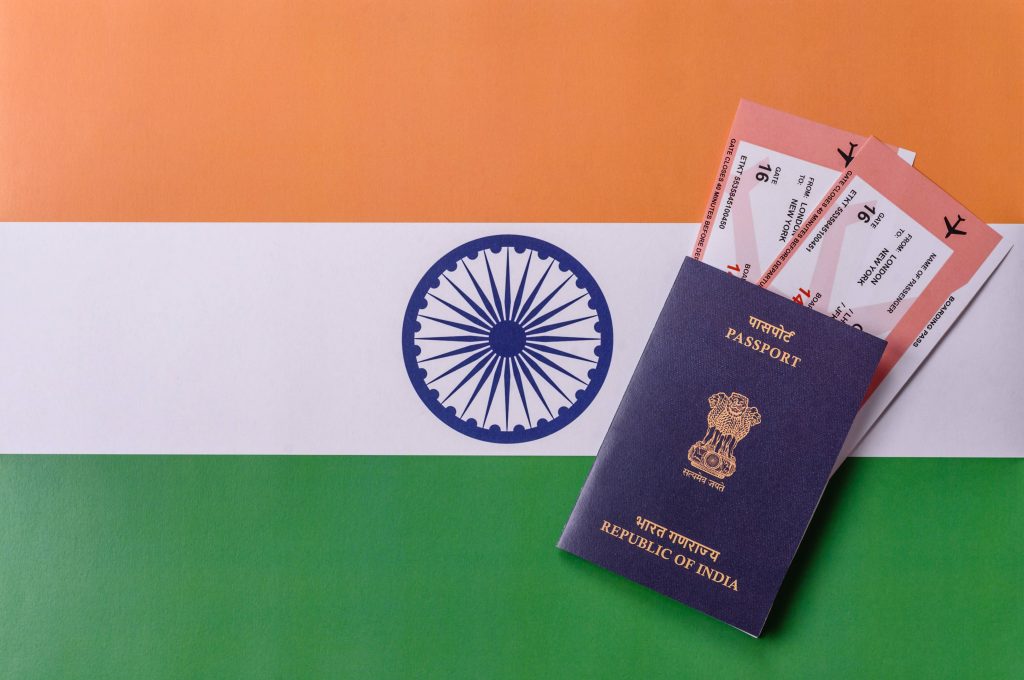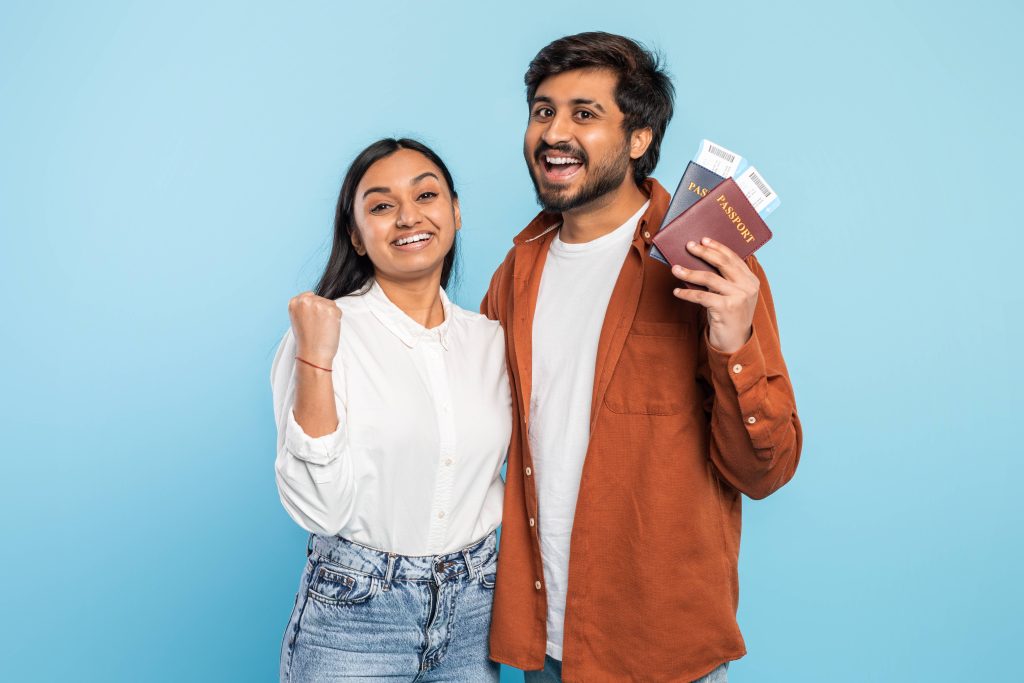Applying for an Indian visa is often seen as a straightforward task, until it’s delayed or rejected over a small yet critical detail: the photo. Most applicants assume that if their face is visible and the background is white, they’re good to go. Unfortunately, that’s not how Indian visa photo requirements work.
Your visa photo is a biometric identifier, a vital document asset, and a potential reason for visa approval or denial.

The Hidden Complexity of Photo Compliance
- Exact Size is Non-Negotiable
The required photo size for Indian visas, 2 inches by 2 inches (51 mm x 51 mm) is not interchangeable with standard passport-size photos in many countries. In fact, many applicants make the mistake of submitting 35mm x 45mm, the European standard, which does not meet Indian visa photo requirements.
- Pixel Density Matters More Than You Think
Digital submissions must be between 10 KB and 1 MB in size, with a minimum resolution of 350 x 350 pixels. This isn’t just a system compatibility requirement. If your uploaded image isn’t crisp at the pixel level, your biometric data could be misread or not captured at all.
Mistakes Most People (and Professionals) Make
- Over-Editing the Image
Automatic photo correction software often blurs edges or whitens backgrounds excessively, creating a halo effect around your head. While this might be aesthetically pleasing, it violates Indian visa photo requirements because it alters your real-life appearance. Always opt for clarity over cosmetics.
- Wearing Glasses or Headgear
Even prescription glasses are discouraged unless absolutely necessary for medical reasons. Reflective surfaces from lenses or accessories can obstruct your eyes and visibility of your irises is mandatory. Similarly, head coverings are only allowed for religious purposes, and even then, they must not cast shadows on the face.
- Inconsistent Lighting
Lighting must be uniform, with no shadows under the chin or around the ears. Most Indian visa photo requirements rejection occur not due to bad cameras, but uneven indoor lighting. Photos taken with strong directional lights or with smartphone flash enabled are often disqualified for this reason.
Digital Photo Upload: Why It’s Not Just ‘Drag and Drop’
- Face Must Occupy 50%–60% of the Frame
Digital uploads are analyzed by automated facial recognition systems before human verification. If your face doesn’t fall within the algorithm’s focus zone, it may be automatically marked as invalid. This percentage includes forehead, chin, and hair.
- Background Should Be Plain Light (Not Always White)
Contrary to common belief, the background doesn’t need to be pure white, a plain light-colored background suffices. The Indian visa portal accepts light gray or cream tones too, as long as they don’t blend into your clothes or hair.
- No Borders, Filters, or Image Compression
Do not compress the image just to meet the upload size. This often results in pixelation. Use original images captured in natural light, resize them in high-quality tools (not mobile apps), and ensure they’re in JPEG format, not PNG or PDF.
For Kids and Infants: A Completely Different Ballgame
- No Adult Hands Should Be Visible
For infant photos, a common mistake is holding the baby in place or positioning their head manually. If another person’s hands or arms are visible in the frame, the image is immediately rejected.
- Eyes Must Be Open and Mouth Closed
Children must be facing the camera directly with both eyes open. This can be extremely difficult with infants, but it’s a non-negotiable rule. A slight angle or open mouth invalidates the image.
- No Toys or Blankets in the Frame
Even if the child is sitting on a blanket or comfort item, it must not be visible. The frame should only include the child’s upper torso and a plain background.
Why You Shouldn’t Rely on Passport Photos or Stock Templates
Passport photos are not interchangeable with visa photos and templates designed for one country’s requirements may result in rejection elsewhere. Many applicants reuse photos from passports, resumes, or national ID cards. This is a mistake. Indian visa photo requirements are specific and dynamic, and outdated assumptions can result in delays or denials.

Photo Verification Is the First Layer of Security
Indian embassies and consulates use facial recognition systems to pre-screen applicants. If your photo fails this scan due to poor lighting, angle, background noise, or pixel compression, the rest of your application may never reach a human reviewer. In other words, your visa process starts with your image. Everything else is secondary for Indian visa photo requirements.
What Professionals Know That Applicants Don’t About Indian Visa Photo Requirements
- Professional photographers often use reference overlays to align your face exactly in the 50%–60% zone.
- They also ensure compliance with both digital upload specs and printed submission rules.
- Many embassies now prefer photos taken within the last 30 days, even if older ones still technically meet size and clarity requirements.
Conclusion:
Instead of treating it like an accessory, consider your visa photo a critical form of biometric authentication. Any deviation even one pixel off can compromise system recognition or raise red flags during identity verification. Indian visa photo requirements are strict because they act as the first firewall against identity fraud.
Frequently Asked Questions
Can I submit a passport photo I already have?
No. Most passport photos are 35mm x 45mm, which does not match the required 51mm x 51mm for Indian visas.
Is it okay to smile in the photo?
A neutral expression with a closed mouth is required. Smiling, showing teeth, or frowning can result in rejection for Indian photo visa requirements.
Do I need to remove my head covering or hijab?
Religious head coverings are allowed, but they must not cast shadows or obscure your face.
Can I use my smartphone to take the photo?
Yes, but only if it meets all lighting, framing, and resolution standards. Avoid shadows, low resolution, or compression.
Are photos of infants or toddlers exempt from the rules?
No. They must also meet specific child photo requirements such as open eyes, no toys, and clear face visibility.
Visit For more Article : Time Business News

